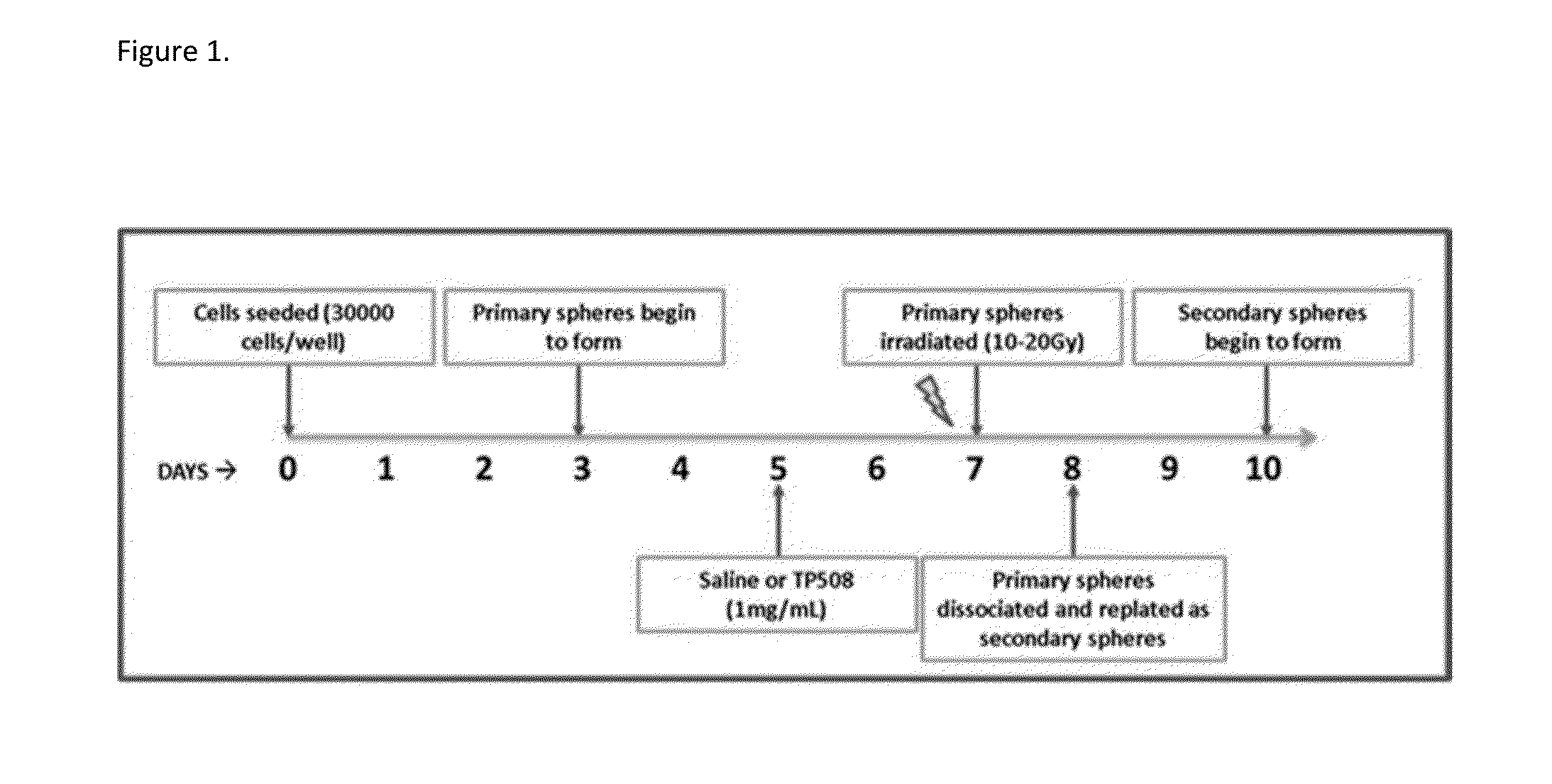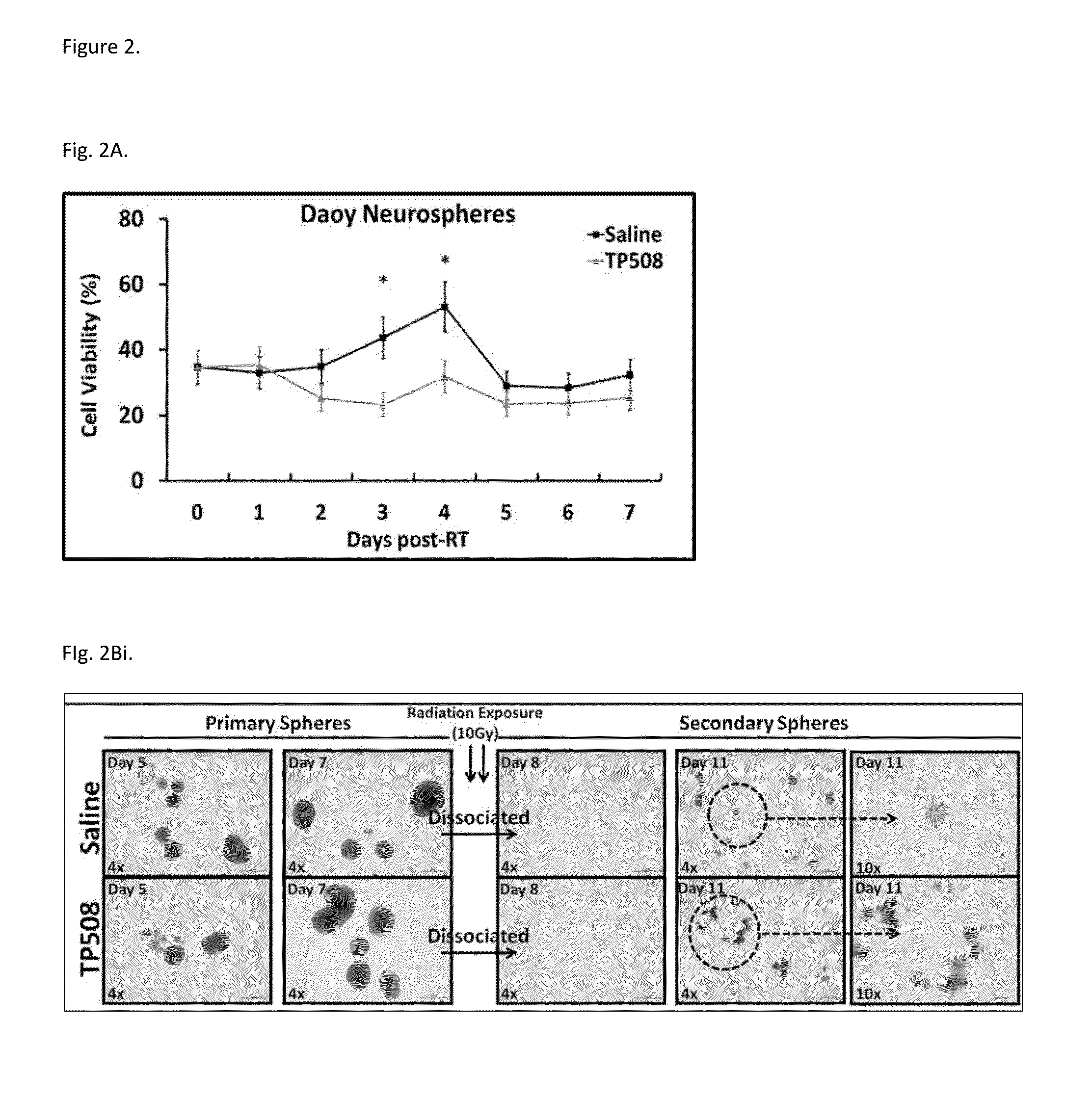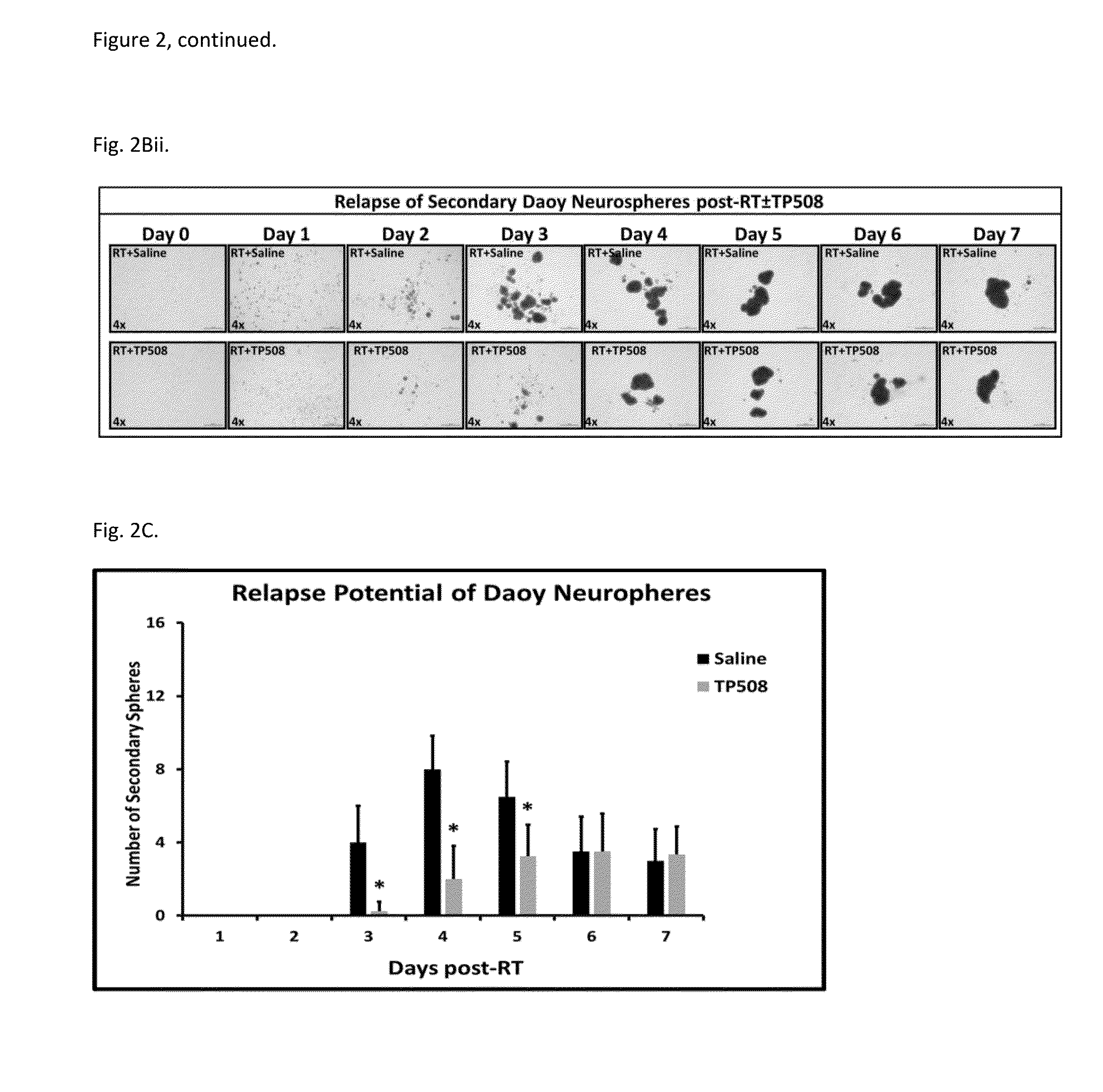Methods of using thrombin derivatives to treat medulloblastoma
a technology of thrombin and derivatives, which is applied in the field of using thrombin derivatives to treat medulloblastoma, can solve the problems of inability to target cscs, drug side effects that affect patients, and radiosensitizers in clinical trials, and achieve the effect of increasing the shrinkage of medulloblastoma in the subj
- Summary
- Abstract
- Description
- Claims
- Application Information
AI Technical Summary
Benefits of technology
Problems solved by technology
Method used
Image
Examples
example 1
Materials and Methods
[0081]Reagents Used.
[0082]Human medulloblastoma Daoy cells (ATCC® HTB-186™) and human primary glioblastoma U87-MG cells (ATCC® HTB-14™) were purchased from American Tissue Culture Collection (ATCC) (Manassas, Va.) were maintained in EMEM medium as per the manufacturer's recommendation. Both cells lines were authenticated by BioSynthesis DNA Identity Center in 2013. Antibodies used include: anti-CD44, ANTI-Sox-2 (Cell Signaling Technology, Danvers, Mass.); anti-proliferating cell nuclear antigen (PCNA), anti-DCAMKL1, and anti-GPCR GPR49 (LgrS) for Western Blot analysis (Abcam, Cambridge, Mass.); anti-LgrS / GPR49 for IF analysis (Abgent, San Diego, Calif.); anti-active caspase-3 and anti-CD133 (Millipore, Temecula, Calif.); anti-β-actin (total) (Sigma, St Louis, Mo.). Alexa Fluor-594 and Alexa Fluor-488 coupled secondary IgG were from Invitrogen (Carlsbad, Calif.). TP508 was synthesized by American peptide as a lyophilized powder; a new batch of TP508 was prepared ...
PUM
| Property | Measurement | Unit |
|---|---|---|
| Time | aaaaa | aaaaa |
| Time | aaaaa | aaaaa |
| Shrinkage | aaaaa | aaaaa |
Abstract
Description
Claims
Application Information
 Login to View More
Login to View More - R&D
- Intellectual Property
- Life Sciences
- Materials
- Tech Scout
- Unparalleled Data Quality
- Higher Quality Content
- 60% Fewer Hallucinations
Browse by: Latest US Patents, China's latest patents, Technical Efficacy Thesaurus, Application Domain, Technology Topic, Popular Technical Reports.
© 2025 PatSnap. All rights reserved.Legal|Privacy policy|Modern Slavery Act Transparency Statement|Sitemap|About US| Contact US: help@patsnap.com



